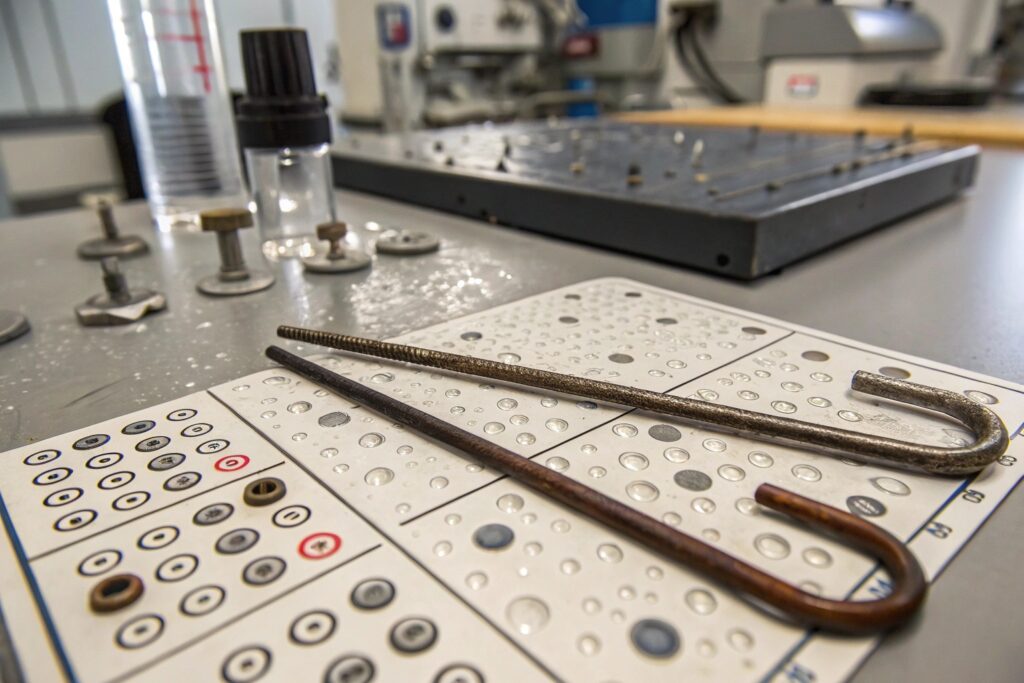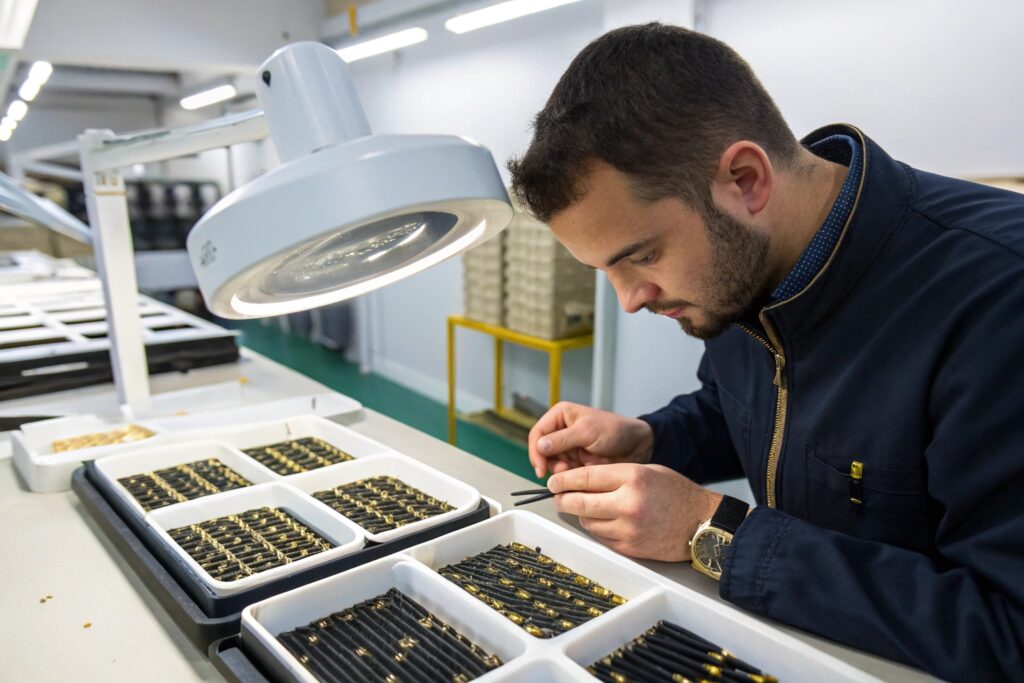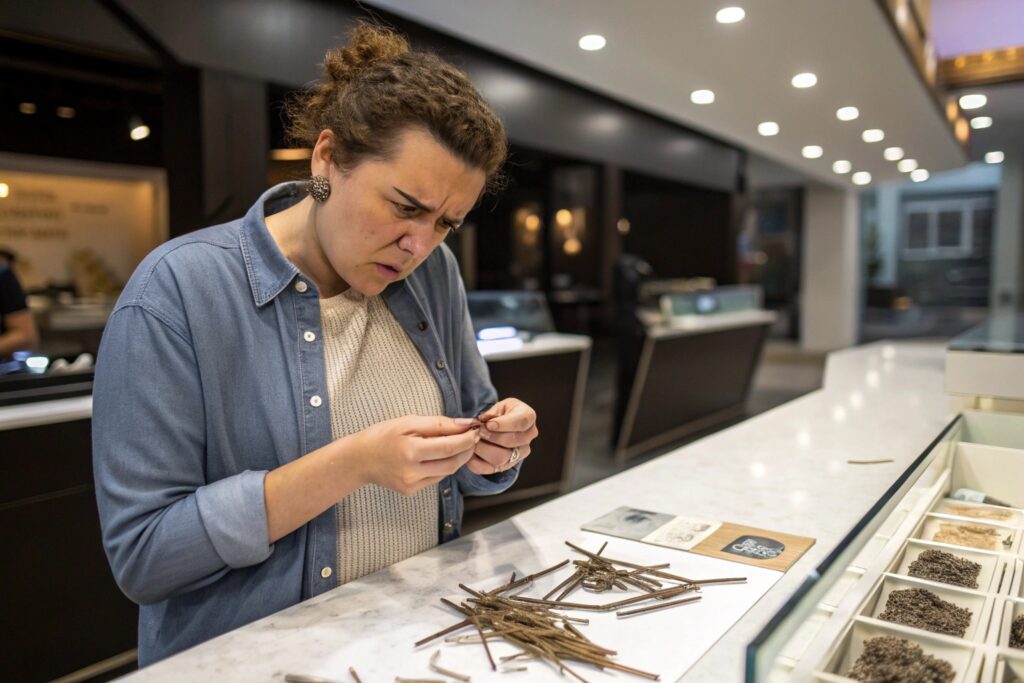If your bobby pins bend too easily, rust too soon, or arrive in inconsistent sizes, you’re likely losing both money and trust. Many suppliers cut corners to save a cent—but it costs buyers much more.
Wholesale bobby pins must meet rigorous quality standards in material, coating, shape, and consistency—especially when sourced in large quantities for resale or brand use.
I’ve overseen the production of millions of bobby pins for clients in the U.S. and Europe. From material sourcing to factory inspections, here’s how we ensure our bobby pins meet the expectations of global buyers.
What Materials Ensure Durability in Bobby Pins?
Most bobby pin failures—bending, rusting, snapping—trace back to the raw materials. So the first thing we look at is the metal.
High-carbon spring steel and rust-resistant alloy coatings are key materials that ensure bobby pins maintain their grip, shape, and color even under frequent use.

Which Metal Types Are Best for Bobby Pins?
The most common choices in quality manufacturing include:
| Material | Durability | Corrosion Resistance | Cost | Flexibility |
|---|---|---|---|---|
| High-carbon steel | High | Medium | Medium | Excellent |
| Stainless steel | High | High | High | Moderate |
| Plated iron | Medium | Low | Low | Good |
We prefer high-carbon steel because of its excellent tension recovery—it springs back into shape after use. Stainless steel is also good but often reserved for niche or medical-grade uses due to price.
How Do We Select and Test These Materials?
All raw metal arrives at our factory with a certificate of composition. We perform:
- Tensile strength tests for bending resistance
- Rust exposure simulations using salt-spray chambers
- Micrometer checks to ensure thickness consistency
If even one roll of metal fails these checks, we reject the batch. That’s how we maintain long-term trust with brand buyers like Ron from the U.S.
How Is Coating Quality Tested in Wholesale Hairpins?
A shiny bobby pin might look great out of the box—but if the coating peels or fades after a week, your customers will complain. And returns aren’t cheap.
We test bobby pin coating quality through multiple durability and colorfastness inspections—both during and after production—to prevent chipping, fading, or skin irritation.

What Types of Coating Are Used?
Most bobby pins are coated with:
- Electroplated finish (for metallic looks)
- Epoxy paint (for matte or colored styles)
- Rubber-dipped tips (to protect scalp)
We select coatings based on color durability and end-user preferences. For example, dark matte finishes for salon use, gold-tone for bridal markets.
How Do We Test Coating Quality?
We use:
- Salt-spray test: Exposes pins to accelerated corrosion (72 hours minimum)
- Abrasion test: Rub test using 500-cycle swipes with cotton or sandpaper
- Sweat simulation: Mimics prolonged exposure to skin oil and heat
Here’s a visual summary:
| Test Type | Purpose | Pass Criteria |
|---|---|---|
| Salt Spray | Rust/corrosion resistance | No discoloration in 72 hrs |
| Abrasion Test | Surface coating durability | No visible paint loss |
| Tip Adhesion Test | Safety of rubber-coated tips | No peel under stretch force |
When a supplier skips these steps, bobby pins might look good at first—but under daily use, they’ll fail. That’s why our clients include quality-focused salons, not just fast-fashion chains.
Are There Industry Certifications for Hair Accessories?
Not all buyers ask for certificates. But those who do, understand they’re not just paperwork—they reflect a factory’s commitment to consistent, safe production.
While there’s no global “bobby pin standard,” certified factories follow ISO, REACH, and CPSIA guidelines to prove quality, safety, and traceability.

What Certificates Are Relevant to Bobby Pins?
Here’s what we typically provide:
| Certification | Relevance | Region |
|---|---|---|
| ISO 9001 | General production quality management | Global |
| REACH | Chemical safety (no heavy metals) | EU |
| CPSIA | Lead & phthalate compliance for kids’ use | USA |
| GSV or BSCI | Social compliance audits | Global |
These help ensure your products won’t trigger customs delays, complaints, or lawsuits. It also builds confidence for brands reselling on Amazon or in retail chains.
Should You Always Ask for These Certificates?
Yes—especially if:
- Your bobby pins are for kids or beauty retailers
- You resell in regulated markets (like the EU or U.S.)
- You want to avoid customs holds for unknown materials
At HairAcc, we keep updated copies of REACH and CPSIA test results, and we update them every 6–12 months based on the most recent batch. We also offer custom third-party testing for clients with stricter specs.
What Defect Rates Are Acceptable in Bulk Orders?
Even top suppliers can’t promise zero defects. But how many flawed pieces are acceptable in a 10,000-piece bobby pin order?
In wholesale terms, an acceptable defect rate for bobby pins is under 1.5%—as long as issues like misalignment, broken tips, or missing coating are checked and reported before delivery.

What Kinds of Defects Are Considered Critical?
Here’s how we categorize them:
| Defect Type | Classification | Examples |
|---|---|---|
| Critical | Severe | Sharp ends, rusted surfaces |
| Major | Moderate | Off-center bend, poor coating |
| Minor | Cosmetic | Light scratches, mislabeling |
A factory must catch critical and major defects before shipping. We do:
- 100% visual inspection for first 5,000 pcs
- Random sampling at AQL 1.5–2.5 for larger volumes
- Detailed inspection reports before loading containers
How Can You Protect Your Orders from High Defect Rates?
Ask your supplier:
- What’s your AQL standard?
- Do you allow third-party QC?
- Can you provide inspection photos before shipping?
At HairAcc, we welcome third-party QC—because we’re confident in our process. We also offer replacements or credit for confirmed defects beyond our contract tolerance.
Conclusion
Wholesale bobby pins may seem like a simple product, but when you consider materials, coating, certification, and defect control—the standards are clear. Choose a partner who checks every box, not just the price tag.









